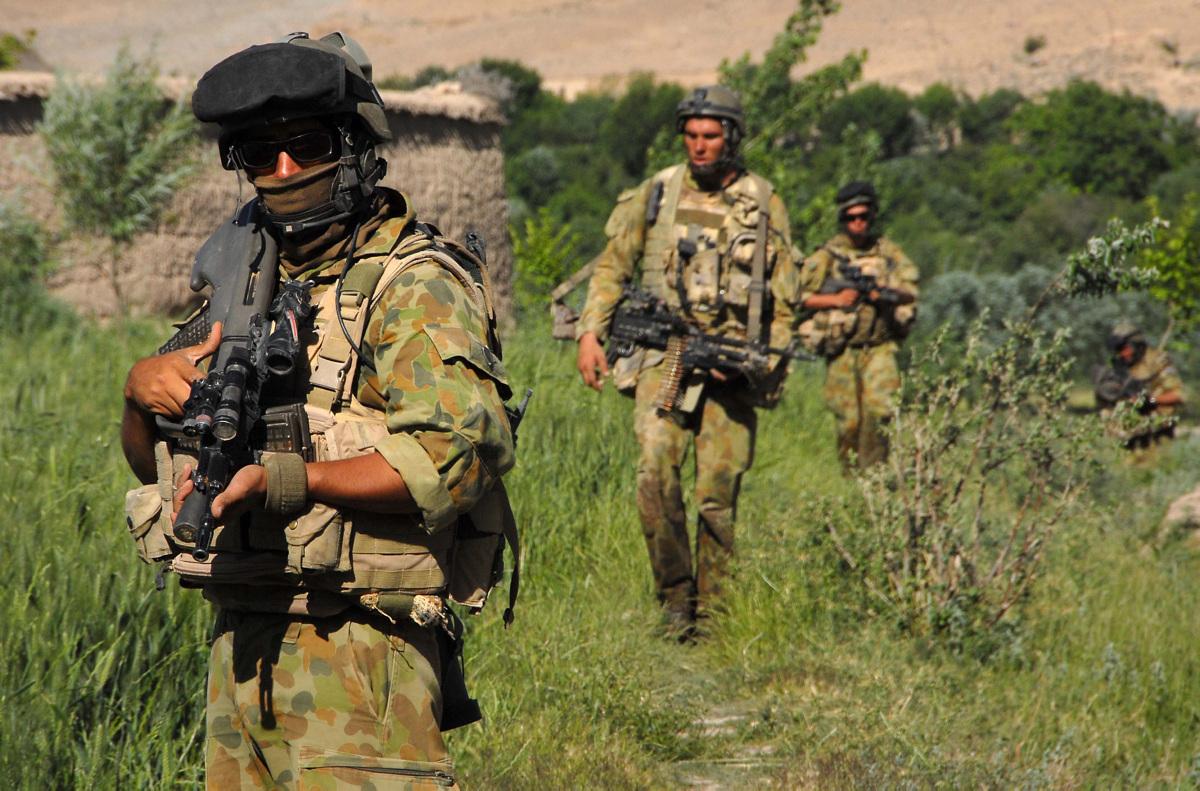Sticking to our guns: the story of the Austeyr rifle
Posted By Chris Masters on October 31, 2019 @ 06:00

In ‘Sticking to our guns: A troubled past produces a superb weapon [1]’, the latest volume in ASPI’s series of case studies in defence projects, published today, Chris Masters delivers a cracking read about the ‘funny plastic weapon’ that replaced the Vietnam-era L1A1 assault rifle in the 1980s, the successors to which remain the Australian Defence Force’s primary personal weapon. The following is an excerpt from the book.
Introduction: self-sufficiency
A man fires a rifle for many years, and he goes to war, and afterwards he turns his rifle in at the armory and he believes he’s finished with the rifle. But no matter what else he might do with his hands—love a woman, build a house, change his son’s diaper—his hands remember the rifle and the power it proffered.
—Anthony Swofford, writer and former US Marine
Gun debate can clamour like an angry mob, with noise and passion surging at the forward edge while reason and logic shrink to the rear. This may in part explain the polarity of opinion on Australia’s service rifle, the Austeyr.
According to one of the engineers closely associated with its development, ‘Australia should be proud of the Austeyr. It’s the first time we’ve done a ground up design of a frontline infantry rifle that’s now right up there with the world’s best.’
With equal conviction, a professional instructor at the range at Townsville’s Lavarack Barracks counters: ‘It’s an older weapons system that hasn’t adapted to current needs. It’s just kind of an older system that has been polished and had attachments added to try and fix those issues.’
This running battle about the most important piece of kit in Australia’s defence inventory that has dragged on for the past 30 years isn’t only about the weapon, but the industry it springs from. Central to the argument about the capability of the weapon is its sustainability.
Globalisation doesn’t make the island continent less geographically remote. Nor are the seas and shores less vulnerable. Self-sufficiency in weapons production and maintenance is a goal that’s sensible in peacetime and indispensable in a crisis.
Another critical goal is the alignment of the three main industry groups invested in the project: the designers, builders and users within the Australian defence estate. Producing a state-of-the-art weapon that will suit a range of uses, and for the space of a generation remain relatively futureproof, is the tallest of orders. When aspirations and objectives fall short, as will likely be the case, the key stakeholders tend to turn on one another. So, behind the battle to build a better weapon is another struggle: to harmonise team effort.
Another goal that should be unmasked at the outset is what’s sometimes described as ‘unobtainium’. No matter the expertise and budgetary power applied, there’s no such thing as a perfect weapon. Compromises relating to national capability, general purpose, fleet management and costing will inevitably cast a shadow of disappointment.
And the frowns will be mostly found on the faces of the soldiers—the ones who count the most. With the very fabric of their life invested in the performance of their personal weapon, the soldier understandably has prime leverage.
And, while I’m coming close to choking on my own words, it has to be declared that they don’t always know what they’re talking about. As seen too often, inexperience, personal preference, prejudice, fashion and vanity can come into play.
Meanwhile, the project managers, design engineers and manufacturers are obliged to mediate myriad demands and complaints while maintaining a cold, hard eye on the evidence.
The Austeyr story captures all these highs and lows. While it isn’t always appreciated, the people who have built it care about the product of their labour. Like the men and women in uniform, they contribute to the defence of Australia.
In subsequent chapters, I cover the way the weapon evolved and the arguments about its strengths and weaknesses—I hope without straying too far into a subsuming swamp of detail.
Criticism of the Austeyr will sometimes, I’m sure, be found to be valid and other times to be unfair. As in life, we need to sift nuggets of reality from the mullock of perception.
Like a sniper in a hide contemplating the target, we must measure our breath, advance situational awareness and focus.
An obvious outcome of all that heat generated by all that argument over an individual weapon is an issue of confidence. The Austeyr story isn’t only about barrels and bolts and bullets. It’s also about mindset, expectation management, training and communication.
Citizens of the future will always look back on the past as a period of lost opportunity. While little can be done to prepare for the unknown unknowns, we can be vigilant about lessons learned from modern and deeper history.
As eyes and minds and bottom lines turn to the ADF’s new Small Arms Replacement Program, the story of the last major acquisition and its attendant evolution is both interesting and important, cautionary and enlightening.
Article printed from The Strategist: https://aspistrategist.ru
URL to article: /sticking-to-our-guns-the-story-of-the-austeyr-rifle/
URLs in this post:
[1] Sticking to our guns: A troubled past produces a superb weapon: https://www.aspistrategist.ru/report/sticking-our-guns-troubled-past-produces-superb-weapon
Click here to print.